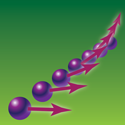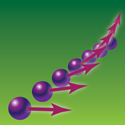Separating oil from water with magnetic resonance force microscopy
In samples that contain very few spins, random spin flips generate a fluctuating polarization that exceeds the typical thermal, or Boltzmann, polarization. Although the dominance of this statistical polarization would appear to pose a major obstacle to nanoscale magnetic resonance experiments, in fact, it can be harnessed for nuclear spin detection.
In bulk samples, the magnetic resonance signal from an ensemble of one type of nucleus can be enhanced by “cross polarizing” it with an ensemble of another species. In simple terms, the dipolar coupling between two spin ensembles allows polarization to transfer from one ensemble to another, leaving the fingerprint of a particular species on the other. In a paper appearing in Physical Review Letters, Martino Poggio, now at the Swiss Nanoscience Institute and the University of Basel, and colleagues at IBM Almaden adapt this cross-polarization technique to a system in which statistical fluctuations dominate rather than the Boltzmann polarization. With magnetic resonance force microscopy (MFRM) they are able to distinguish ensembles of and spins in -enriched stearic acid ( ).
Poggio et al. are able to observe the influence of the spins on the spin signal (and vice versa), a result that can, for instance, allow MRFM to distinguish between organic materials and water. This promises well for materials characterization at the nanoscale, and could eventually be applied to distinguish individual protein components in nanoscale biological structures. – Daniel Ucko





